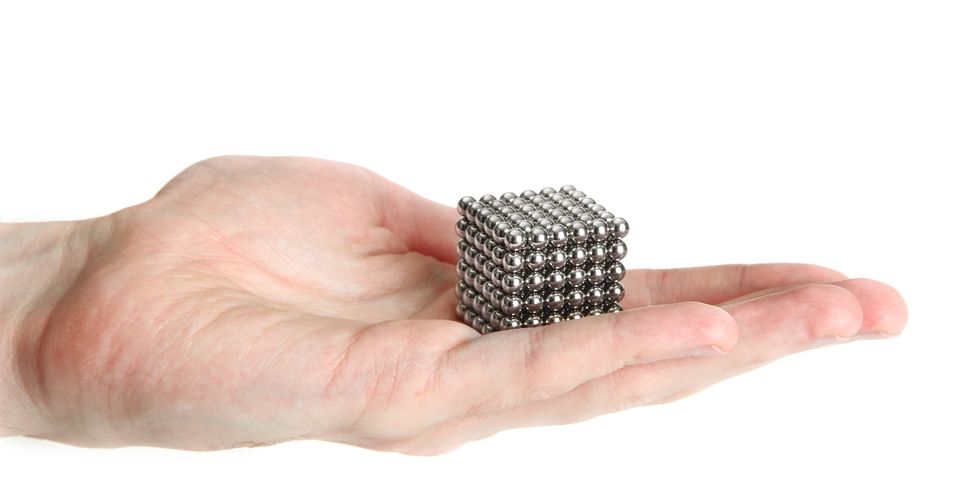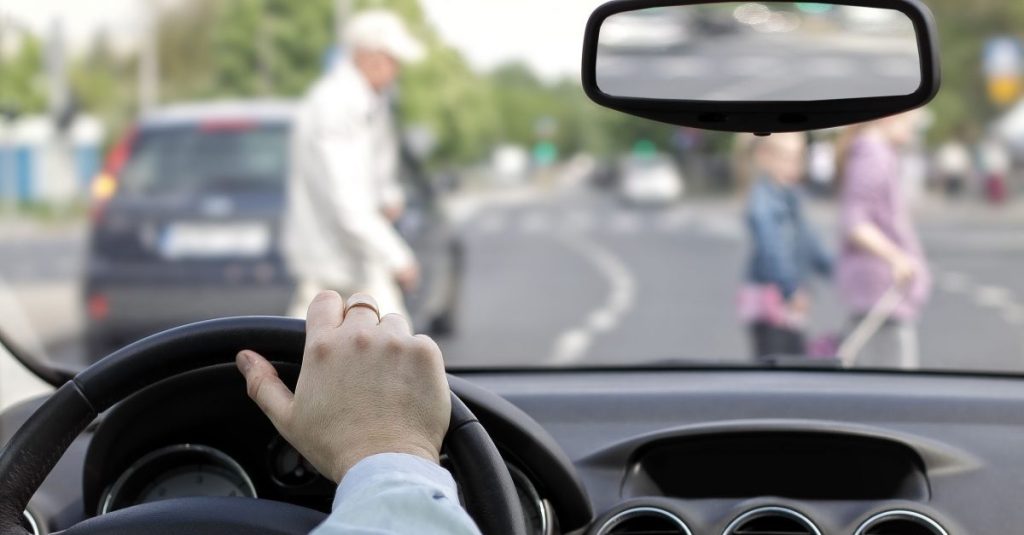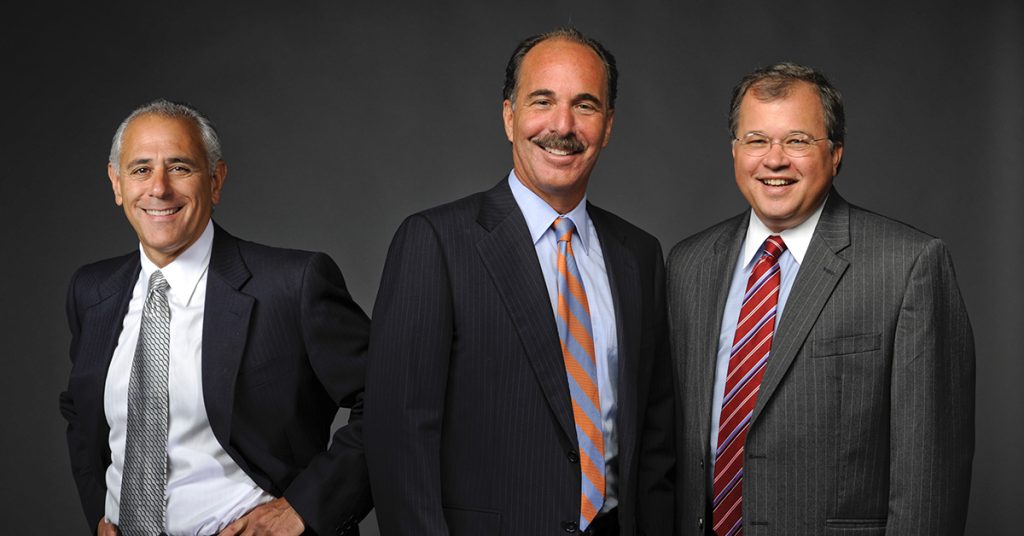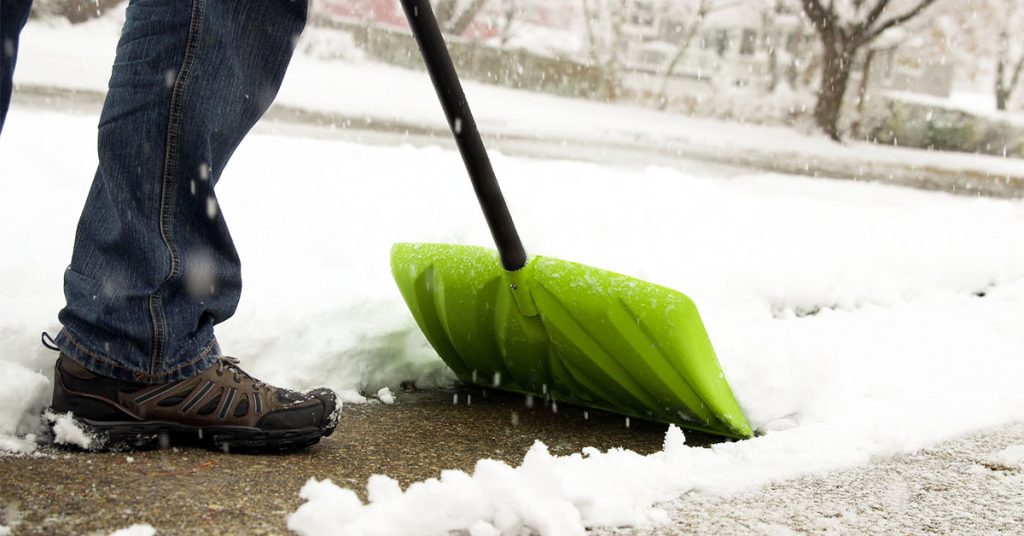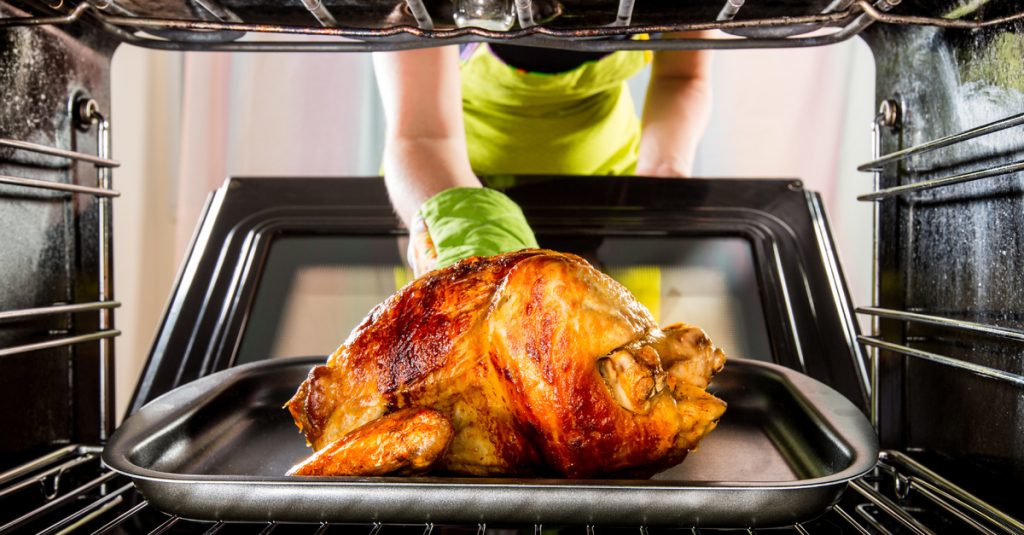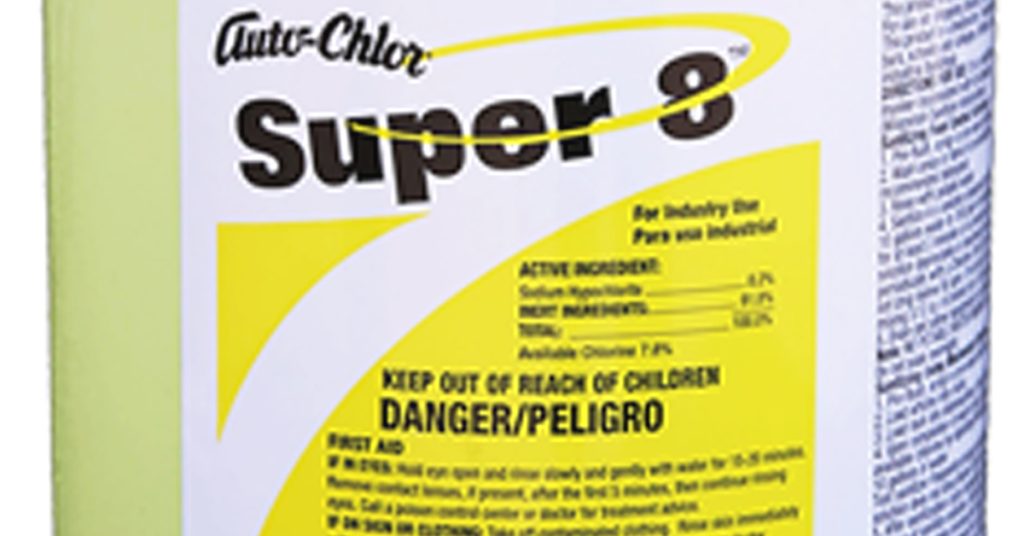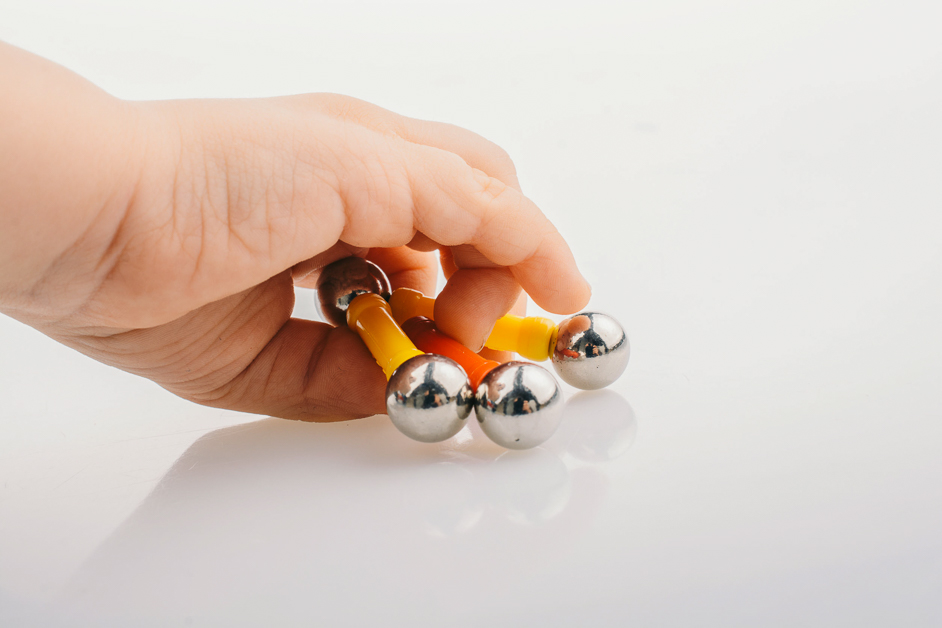Personal Injury
How to File a Massachusetts Motor Vehicle Crash Report

If you have been injured, it is important to submit a Massachusetts motor vehicle crash operator report.
Have you reported your car accident to police?
While we hope you are never involved in a crash, drivers can take a few minutes to familiarize themselves with the Massachusetts motor vehicle crash operator report. Reviewing it can be helpful should you ever be in a crash – or witness one.
You can find the Massachusetts motor vehicle crash operator report online. It is available on the state of Massachusetts website.
Massachusetts Motor Vehicle Crash Operator Report – Driver Obligations
M.G.L. Chapter 90, Section 26 states the driver of a motor vehicle involved in a crash must report the collision if anyone was killed, injured or if property damage resulted in an excess of $1,000 in damage. This damage may be to a vehicle involved in the crash or to another type of property, such as a fence or building.
All drivers involved in crashes must file a report with the Massachusetts police department which has jurisdiction, their auto insurance company and the state Registry of Motor Vehicles.
Drivers have five days to file a report. The exception is when a driver suffered serious injury and is unable to file a police report right away.
Police departments must accept motor vehicle crash reports from any driver who unlawfully left the scene of a hit and run accident, even when the property damage falls under $1,000.
When a driver operates someone else’s vehicle under the influence of alcohol and there is a crash, the vehicle’s owner is responsible for reporting. They have five days to report the crash, based on when they learned about the crash.
Filing a motor vehicle crash report is your responsibility as a driver, whether you were injured or at fault in the crash. Failure to fill out a motor vehicle crash report has consequences. Drivers can have their licenses suspended by the RMV. They may also face criminal penalties.
Motor vehicle crash operator reports are the first step if you need to have your car repaired, replaced or if you have been injured. Police will consider the crash report you submit as part of their investigation in determining who was at fault and whether to cite that person. A traffic citation or criminal charges can support your claim seeking financial compensation for medical expenses, lost wages and other damages.
Filling Out The Report – What Drivers, Passengers and Others Should Know
If you are seriously injured, you cannot gather evidence and information at the accident scene. The investigation will largely fall to the police department which responds.
But if you can collect information, your cell phone is the best tool you have after a car crash. Take photos of everything, from your own vehicle to the roadway and the other vehicle.
This is where it becomes valuable to review the Massachusetts motor vehicle crash report before an accident. By doing so, you will have a better understanding what information to capture on the scene. As you can see, the report requests the other driver’s license and insurance information. It also asks drivers to report:
- Crash Location
- Vehicle You Were Driving
- You and Your Passengers
- Other Vehicles Involved in the Crash
- Non-Motorist(s) Involved
- Crash Conditions
- Crash Diagram
- Witness Information
- Property Damage Information
- Description of What Happened
Read the motor vehicle crash report for more information on each of these points. The report contains a section dealing with pedestrian accidents and bicycle accidents.
What’s Next
When you have been injured, receive medical attention first. Then you can file a police report, consult a Boston car accident lawyer or contact your auto insurance company if you were operating a motor vehicle when the accident occurred. You should decide which order based on the severity of your injuries. We recommend consulting a lawyer first if you have been injured. Our lawyers can explain your legal rights, answer your questions and assist in handling all the important steps, including contact with the auto insurance companies and the police department.
We have represented clients in communities across Massachusetts, from Boston to the North Shore, South Shore, Cape Cod, the New Bedford area and Worcester.
Avoid all contact, whether by phone or email, with the other driver’s auto insurance company. It is also recommended that you and your family stay off social media. Do not confide in friends or co-workers about a car accident until you have spoken to a lawyer and made some progress in your physical recovery.
For additional tips, please visit Breakstone, White & Gluck’s website page, “What to Do When You Have a Car Accident.”
About Breakstone, White & Gluck – Massachusetts Car Accident Attorneys
With more than 100 years combined experience, Breakstone, White & Gluck represents individuals and families who have been injured by negligent drivers in Massachusetts. Clients turn to us for our experience and results in cases involving car accidents, truck crashes, bus accidents and pedestrian accidents.
If you have been injured by a negligent driver, learn your legal rights. Call 800-379-1244 or 617-723-7676 or use our contact form.
Massachusetts Lawyers Weekly Mentions Breakstone, White & Gluck’s Project KidSafe Campaign
Massachusetts Lawyers Weekly recently gave Breakstone, White & Gluck and our Project KidSafe campaign a nice mention. In 2019, our campaign donated over 4,000 bicycle helmets to children throughout the Boston area with help from more than 30 community partners and police departments. We look forward to continuing our work to protect children in 2020.
Read the article on the Massachusetts Lawyers Weekly website (subscription access required).
Voluntary Safety Standard Unlikely to Prevent Children’s Magnet Injuries, Advocates Warn
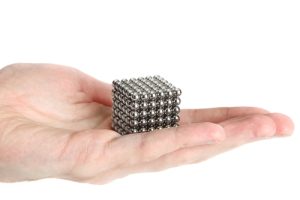
There is a disturbing new report out about children ingesting rare-earth magnet sets at an accelerated rate since 2016, when the industry overturned a federal sales ban in court. The magnet industry now markets these powerful cluster sets to adults, but children continue to swallow them. Parents can take precautions by double checking holiday gifts and discarding any of these products.
The Consumer Product Safety Commission (CPSC) issued a rule banning the small rare-earth magnet sets in 2014 after hundreds of children reportedly ingested the magnets. The rare-earth magnets were (and still are) about 10 times as strong as other magnets. The CPSC’s ban required magnetic parts to have a lower force of attraction of 50 kG² mm² or less.
According to The Washington Post, child ingestions had dropped after the ban was implemented. Injuries dramatically rose between 2017 and 2019, with an estimated 1,580 ingestions this year.
Magnet makers are now working to establish a voluntary safety standard to avoid future attempts at regulation. With the committee votes due in January, The Washington Post reports safety warnings may be added, but actual product changes are unlikely.
The Washington Post reported on many aspects of the process, including:
Voting members. The ASTM International organization oversees the process for creating voluntary safety standards for consumer products. The committee set to vote includes safety advocates and magnet industry officials or those with ties to the industry. CPSC staff is involved, but do not lead the process.
One potential issue is the number of voting members has shifted recently from 36 to 33, according to The Washington Post. The magnet industry can only represent 49 percent of the vote according to ASTM guidelines, but the industry and members with ties to the industry accounted for 55 percent of the vote when the story was published. The newspaper also reported some of the voting members were incorrectly categorized.
No agreement on magnet size. Some of the committee members want to make the magnets too large to swallow and/or decrease the strength to reduce the risk a child’s risk of organ damage. These committee members asked about increasing the magnet size to 1.25 inches in diameter. This would fall more into line with the federal “small parts” law which requires toys to carry a choking hazard warning if any parts fit through a cylinder with this diameter. The bottom of the testing cylinder is slanted, opening 1 to 2.25 inches. The choking hazard warning must also state, “Not for children under 3 yrs.”
Industry officials oppose, saying the proposal would make the tiny magnets six times as large and also increase the magnet force.
The ballot calls for adding new safety warnings on packaging and a change so consumers can visually check that all the advertised magnets are inside the box. There are no other changes.
While a voluntary safety standard should improve safety, a CPSC commissioner told The Washington Post the process can actually cost lives. Rare-earth magnets are just one story when change isn’t about protecting children, but protecting an industry. As a consumer, take time to really read just what the safety warnings and labels say.
The CPSC offers an online database for product recalls and updates. You may find advisories associated with certain types of products before a formal recall occurs. Other organizations – such as Consumer Reports, the American Academy of Pediatrics and Safe Kids – also publish valuable information and insights. Subscribe to newsletters and learn as much as you can about shopping for children’s products and toys.
Breakstone, White & Gluck shares product recalls on our blog and Facebook page. Read more about rare-earth magnets and magnet gifts for children in our recent blog, “Keep Magnet Toys Off Your Holiday Shopping List.”
About Breakstone, White & Gluck – Boston Product Liability Lawyers
With more than 100 years combined experience, Breakstone, White & Gluck has expertise in handling all types of product liability claims, including those involving defective consumer products, dangerous toys, unsafe vehicles and hazardous medical devices. Our Boston product liability lawyers represent clients who have been injured by negligence throughout Massachusetts, from Boston to Plymouth to Cape Cod, Worcester, Western Massachusetts and the North Shore.
For a free legal consultation with one of our attorneys, call us today at 800-379-1244 or 617-723-7676. You can also use our contact form.
Protecting Older Pedestrians From Car Accidents in Massachusetts

Massachusetts state officials are working to improve safety for older pedestrians.
When the snow falls, Massachusetts becomes more treacherous for everyone who walks. Older pedestrians are particularly vulnerable.
Massachusetts now has more than one million residents who are 65 or older – or roughly 15 percent of our population, according to a recent report, “Risk Factors for Older Pedestrian Injuries and Fatalities in MA.” The report was prepared for the Massachusetts Department of Transportation (MassDOT) in August 2019.
As Massachusetts residents live longer, many are more likely to be out walking for health or transportation. The state report identifies common risks to older pedestrians:
Winter Months. Researchers studied 4,472 pedestrian crashes across Massachusetts between 2006 and 2015, reporting crashes involving older pedestrians peak at 5 p.m. and during the month of December. November and January are also high risk months for older pedestrians, as they navigate darker conditions. When snow and ice is not cleared, sidewalks, parking lots and driveways can also contribute to unsafe conditions, as do drivers who fail to look for pedestrians and stop at crosswalks.
Causes of Older Pedestrian Crashes. Drivers who caused older pedestrian crashes were often inattentive, failed to yield the right of way or had trouble with visibility.
Where Older Pedestrians Were Hit. Older pedestrians were often hit at crosswalks at intersections, where they should have safety protections.
Where Older Pedestrians Crashes Occur. Researchers found Cambridge, Fall River, Lynn and New Bedford among the the top communities for highest number of older pedestrian crashes and the highest per capita.
Changing Face of Pedestrian Accidents. Crash rates involving “younger old” pedestrians – those between age 55 and 74 – increased. Crash rates among older pedestrians (75 and older) remained consistent.
Community Health. Communities with higher rates of disability reported greater rates of older pedestrian crashes. These included the urban neighborhoods of Boston, Lawrence and Chelsea.
Community Amenities. Communities with a high number of cultural amenities within walking distance – such as libraries and fitness centers – had higher crash rates among older pedestrians.
Not Just Older Pedestrians in Massachusetts. This state report comes as pedestrian fatalities rise across the country. Last March, the Governors Highway Safety Association announced a 35 percent increase in pedestrian deaths from 10 years ago (Streets Blog). This was the highest number of pedestrian fatalities since 1990.
Nationally, research shows 48 percent of pedestrian fatalities involved victims 50 and older, according to the Massachusetts study. Meanwhile, Massachusetts reports half of all pedestrian fatalities involve a pedestrian 55 and older.
Report Recommendations
The state report recommends work to protect older pedestrians be tied in with the Governor’s Council to Address Aging in Massachusetts, which was established in 2017. Among other advisories, the state report also sought infrastructure improvements in certain communities and creation of a winter public awareness campaign aimed at protecting older pedestrians.
Our Safety Tips for Pedestrians During Winter
Wear Neon. Pedestrians can make themselves more visible to traffic by wearing neon colors and neon reflective tape. Consider buying neon jackets, vests, hats and gloves to stand out.
Our Safety Tips for Drivers During Winter
Stop at Crosswalks. Make eye contact with pedestrians at crosswalks. Stop as they cross.
Other Drivers. Stop if you are approaching a driver who has stopped for a pedestrian at a crosswalk. Allow the pedestrian to completely cross the street.
Avoid Night Driving At Times. If you are overtired or are having trouble seeing at night, don’t drive. Make an appointment to have a doctor check your vision. Wear your eyeglasses as prescribed when you drive.
Limit Alcohol Consumption. Never drive while intoxicated. Use the designated driver system.
Free Legal Consultation – Boston Personal Injury Lawyers
With over 100 years combined experience, Breakstone, White & Gluck has been consistently recognized for our results in personal injury cases in Massachusetts, including by Top 100 New England Super Lawyers and U.S. News Best Law Firms. If you or a loved one has been injured by someone’s negligence, it is in your best interests to consult an experienced personal injury lawyer. For a free legal consultation, contact our attorneys at 800-379-1244 or 617-723-7676 or use our contact form.
2019 Year in Review from Breakstone, White & Gluck
Marc L. Breakstone, David W. White and Ronald E. Gluck founded Breakstone, White & Gluck in 1992. This year, our partners and our associate Reza Breakstone continued our practice, delivering superb and meaningful results to our clients in injury cases:
Attorney Marc L. Breakstone Interviewed About Lynnway Auto Auction Indictments
In March, Attorney Marc L. Breakstone was interviewed by WHDH TV about the criminal indictments returned against the Lynnway Auto Auction and its company president. Each was charged with five counts of manslaughter in the 2017 crash killing five people. Attorney Breakstone is representing one of the families who lost a loved one.
Attorney David W. White Interviewed by NBC Boston on E-Scooters
Attorney David W. White was interviewed by NBC Boston for a segment called, “Are You Protected in a Scooter Crash? Experts Say Read the Fine Print.”
Attorney Ronald E. Gluck Negotiates $1.6 Million Settlement for Client Who Suffered Concussion and Mild Traumatic Brain Injury
Attorney Ronald E. Gluck negotiated a $1.6 million settlement for a client who suffered a concussion and mild traumatic brain injury. Attorney Gluck discusses his work for clients in this area:
Project KidSafe and Community Outreach
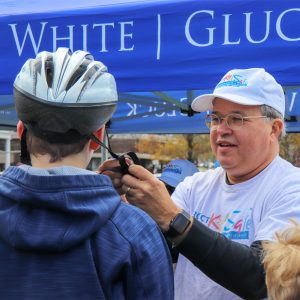 In April, Breakstone, White & Gluck launched our 7th annual Project KidSafe campaign with a bike helmet giveaway at Framingham Earth Day. We recently concluded another successful year, donating more than 4,000 bicycle helmets to children across Massachusetts. To reach children and families, our firm partnered with more than 35 community organizations, including 12 police departments, schools and bicycle committees, along with MassBike and Massachusetts Safe Routes to School.
In April, Breakstone, White & Gluck launched our 7th annual Project KidSafe campaign with a bike helmet giveaway at Framingham Earth Day. We recently concluded another successful year, donating more than 4,000 bicycle helmets to children across Massachusetts. To reach children and families, our firm partnered with more than 35 community organizations, including 12 police departments, schools and bicycle committees, along with MassBike and Massachusetts Safe Routes to School.
With this year’s donations, our attorneys have now given away more than 25,000 helmets, with a goal of protecting children on bicycles, preventing head injuries and saving lives.
As we made our last helmet donation of 2019, we were especially touched by kind words from Boston Police Commissioner William Gross:
Outside our Project KidSafe campaign, we supported many bar and community organizations, including the Massachusetts Bar Association and Massachusetts Academy of Trial Attorneys. In January, we supported and participated in the Equal Justice Coalition’s Walk on the Hill, when lawyers across the state advocate for increased state funding for civil legal aid.
Attorney Marc L. Breakstone Published in MATA Journal
In May, Attorney Marc Breakstone was published in the MATA Journal, with an article called, “Assessing bias in voir dire after ‘Williams.’
Attorney Ronald E. Gluck Successfully Resolves Mild Traumatic Brain Injury Case Caused by Heavy Snow Collapse
In May, Attorney Ronald E. Gluck announced he had successfully resolved a mild traumatic brain injury case for our client, who was injured when heavy snow collapsed from a commercial warehouse roof onto her vehicle.
Attorney Marc L. Breakstone Wins $1.1 Million Verdict in Rhode Island Case
In May, Attorney Marc L. Breakstone won a $1.1 million verdict for our client who was injured in a car accident.
Awards: Best Lawyers in America© 2020
In August, Attorneys Marc L. Breakstone, David W. White and Ronald E. Gluck were selected for inclusion to the Best Lawyers in America© 2020. Our attorneys were recognized for their excellent work in personal injury, medical malpractice, professional malpractice and insurance law cases.
Attorney Marc L. Breakstone Reaches $2.15 Million Settlement in Wrongful Death Case After Crash in Unsafe Parking Lot
In October, Attorney Marc L. Breakstone announced he had negotiated a $2.15 million settlement on behalf of his client’s estate.
Awards: 2019 Super Lawyers
In October, Attorneys Marc L. Breakstone, David W. White and Ronald E. Gluck were all recognized in the 2019 Super Lawyers rankings. Our firm honors included Top 100 New England Super Lawyers, Top 100 Massachusetts Super Lawyers and Massachusetts Super Lawyers recognition in the areas of personal injury and medical malpractice. Our attorneys were recognized for the 16th year.
Awards: Best Law Firms of America© 2020
In November, Breakstone, White & Gluck was recognized in the 2020 Edition of U.S. News – Best Lawyers “Best Law Firms.” Our firm received rankings as a Tier 1 Boston law firm in personal injury litigation representing plaintiffs and a Tier 1 Boston law firm in medical malpractice litigation representing plaintiffs.
Attorney Marc L. Breakstone Published in MATA Journal
In November, Marc L. Breakstone was published in the MATA Journal, with an article called, “Establishing Liability: Through the Defendant.”
Free Legal Consultation – Breakstone, White & Gluck – Personal Injury Lawyers
Breakstone, White & Gluck has more than 100 years combined experience representing clients in cases involving personal injury, wrongful death, medical malpractice, motor vehicle accidents, bicycle accidents, pedestrian accidents, head injuries, construction accidents, premises liability and product liability. If you or a loved one has been injured, contact our attorneys for a free legal consultation and learn your legal rights: 800-379-1244 or 617-723-7676. You can also use our contact form.
Cautionary Tales about Snow and Ice Accidents in Massachusetts
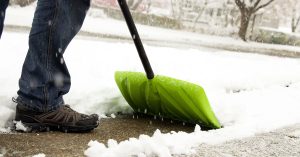
As we negotiate the season’s first snow, there are many warnings: give yourself extra time, drive slowly and clear your car, front steps and driveway.
Remember these precautions in coming days and weeks, especially if you are a property owner. In Massachusetts, property owners have a duty to use reasonable care in clearing snow and ice so no one is injured. Papadopoulos v. Target Corp., 457 Mass. 368 (2010). Where there was once a distinction between “natural” and “unnatural” snow accumulations, there is no longer. The best way to keep your property safe is keep up with each snow fall. Frequently inspect your property throughout the season.
Snow and ice injuries can be serious, requiring months or more to heal. Shoveling your driveway is your responsibility as a property owner and the right thing to do. No one wants to bear the guilt of causing another person injury. And no one wants to be held liable for someone else’s injury and have to pay financial damages.
At Breakstone, White & Gluck, our Boston personal injury lawyers have extensive experience handling premises liability cases, including snow and ice injuries caused by negligence. We share our cases as cautionary tales.
Slip and Fall on Icy Ramp at Commercial Property, $825,000 Settlement
Attorney Marc L. Breakstone successfully negotiated an out-of-court settlement for a client who suffered a serious fall on an icy handicap ramp. The ramp was on a commercial property. Our client suffered a trimalleolar fracture with ankle fusion and had to undergo multiple surgeries. Photos gathered in the case showed part of the handrail was actually missing prior to the accident and there was ice from a downspout. The case settled in favor of our client after two days of mediation. Attorney Breakstone had engaged an engineering expert and meteorology expert to testify had the case gone to court.
Heavy Snow Collapse Causes Traumatic Brain Injury, Undisclosed Settlement After 4th Day of Trial
Attorney Ronald E. Gluck successfully negotiated a settlement for our client, who was injured when heavy snow collapsed suddenly from a commercial warehouse roof onto her vehicle. The defendants – the property owner, the property management company and the company which leased the warehouse – had neglected their duty to clear the snow and provide a safe environment. The case went to Middlesex Superior Court, where Attorney Gluck presented testimony from multiple expert witnesses, including a neurologist and a meteorologist, in support of his client’s case. Each day, the defendants made an offer to settle the case. After the fourth day, Attorney Gluck’s client accepted an offer that represented an 800 percent increase from the pre-trial offer.
Free Legal Consultation – Breakstone, White & Gluck
Breakstone, White & Gluck brings more than 100 years combined legal experience to those injured by negligence in Massachusetts. We represent clients across Massachusetts, including in Boston and Cambridge; Saugus and the North Shore; Brockton and Plymouth; Cape Cod; Framingham and MetroWest; and Worcester and Central Massachusetts.
If you have been injured as a result of someone else’s negligence, learn your rights. Contact Breakstone, White & Gluck for a free legal consultation with one of our personal injury attorneys. Call 800-379-1244 or 617-723-7676. You can also use our contact form.
Check Food Recalls and Remember Food Safety This Thanksgiving
 Before you start cooking the biggest meal of the year, check the latest food recalls and come up with a plan for safe food preparation. With good planning, you can minimize the risk of food poisoning at your Thanksgiving table.
Before you start cooking the biggest meal of the year, check the latest food recalls and come up with a plan for safe food preparation. With good planning, you can minimize the risk of food poisoning at your Thanksgiving table.
Food Recalls: Romaine Lettuce
The Food and Drug Administration (FDA) and Centers for Disease Control and Prevention (CDC) are warning consumers to stay away from romaine lettuce contaminated by E. coli. This isn’t the first warning. This follows several romaine lettuce recalls in recent years – including last Thanksgiving (Source: Washington Post).
The current recall is for lettuce contaminated by an E.coli outbreak in Salinas, California. The CDC reports 40 people in 16 states have become ill due to the contamination. The CDC is urging consumers to throw all lettuce with labels which say it originated in Salinas. If you can’t find the growing area, consumers are advised not to eat the lettuce.
From Boston and across Massachusetts, many restaurants have posted advisories that they are not serving romaine lettuce.
Food Recalls: Raw Pork
Federal officials received an anonymous tip that Morris Meat Packaging of Illinois was producing food without federal safety inspection and on Saturdays, outside inspection hours. As a result, the company recalled 515,000 pounds of raw, intact pork products on Nov. 21, 2019. The United States Department of Agriculture’s Food Safety and Inspection Service is calling on consumers to look for EST. 18267 inside the USDA mark of inspection.
Food Recalls: Cheese Nips
Careful before you pick up that Cheese Nip. The parent company of Cheese Nips has issued a voluntary recall because yellow plastic pieces were found on manufacturing equipment. The source was a food scraper and the crackers were recalled to protect consumers from potential food poisoning. Consumers should look for – and not consume – 11-ounce Cheese Nips boxes with a best by date in May 2020. No injuries have been reported in connection to this recall.
Tips to Prevent Food Poisoning in Your Kitchen
Take care to use safe food handling practices when preparing your Thanksgiving meal.
Thaw your turkey in a container in the refrigerator; or in a sealed plastic bag in a sink of cold water (change water every 30 minutes) or in the microwave. Look up and follow instructions from the microwave manufacturer.
Clean, separate, cook and chill. Follow the four steps of food safety to prevent raw turkey from making contact with harmful bacteria. When you wash your hands, remember that germs that cause food poisoning can spread easily in your kitchen. Wash your hands for 20 seconds with soap and water before, during and after preparing and before eating.
Cook stuffing separately from the turkey, thoroughly to 165°F. Only then can the stuffing be cooked inside a turkey. This is a critical and fundamental step because bacteria can form and food poisoning can happen when stuffing is not completely cooked.
Give yourself adequate time to cook the turkey so your guests can safely consume it. The amount of time you need will depend on the weight and size of your turkey. The goal is to reach a safe internal temperature of 165°F. Check by inserting a food thermometer in multiple parts of the turkey, including in the center of the stuffing and the thickest parts of the breast, thigh and wing joint.
(Source: Food Safety Tips for Your Holiday Turkey)
After your Thanksgiving meal, remember to refrigerate leftovers soon (within 2 hours at the most is the CDC recommendation) to prevent food poisoning.
About Breakstone, White & Gluck – Boston Personal Injury Lawyers
Our Boston personal injury lawyers have over 100 years combined experience representing those who have been injured to the negligence and wrongdoing of someone else. If you have been injured, contact our attorneys for a free legal consultation: 800-379-1244 or 617-723-7676 or use our contact form.
Holiday Toy Safety: Check for Age Recommendations and Choking Hazard Labels
 Age recommendation labels are the first tool you have in selecting safe holiday toys. Anyone purchasing toys for young children wants to familiarize themselves with the choking hazard-small parts label.
Age recommendation labels are the first tool you have in selecting safe holiday toys. Anyone purchasing toys for young children wants to familiarize themselves with the choking hazard-small parts label.
Warning: Choking Hazard – Small Parts. Not for Children Under 3 Years
Each year, children suffer choking injuries and deaths after consuming food or putting small objects in their mouths. In the late 1970s, the Consumer Product Safety Commission (CPSC) led a three-month study of an estimated 3,800 injuries involving children under age 10. It was determined that children under age 3 suffered more than half of all these injuries. More than 50 children under 3 died in accidents involving small parts.
With those numbers, the CPSC announced the small parts regulation, which became effective on January 1, 1980. Since then, toy manufacturers have been required to test toys and parts using the small parts cylinder test.
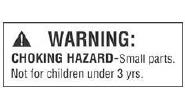
This cylinder has a diameter of 1.25 inches. The bottom of the cylinder is slanted, opening 1 to 2.25 inches. Toys which fall through the cylinder must carry the choking hazard – small parts warning and state not for children under 3 years old. Toys may also require labels if they fit through the tube, but break it during subsequent “use and abuse” testing (Source: U.S. PIRG, Trouble in Toyland 2018).
Toys which are too large can be sold without the choking hazard label, though they may require another type of labeling.
Small Parts Warning for Children Between Ages 3 and 6 Years
Any small part intended for children between age 3 and 6 must carry the same labeling: “Warning: Choking Hazard — This toy is a small part. Not for children under 3 years.”
Small Parts Warning – Small Balls
There is a separate federal standard for small balls, according to U.S. PIRG. Balls with a diameter of 1.75 inches are banned for children younger than 3 years of age.
Small balls must carry this age-recommendation label: “Warning: Choking Hazard — This toy is a small ball. Not for children under 3 years.” A similar label is required for toys which contain small balls: “Warning: Choking Hazard–Toy contains a small ball. Not for children under 3 years.”
Toymakers are required to test and use age recommendation labels. All toys intended for children age 12 and younger must undergo third-party testing and meet the most recent version of the federal safety standard, ATSM F963.
But there are times when parents and anyone buying a toy should be skeptical. Toymakers have made errors in labeling and there can be miscommunication between manufacturers and retailers when toys are displayed without packaging. Online product descriptions may not be accurate.
Remember These Toys Have Small Parts!
- Marbles
- Magnets
- Game pieces (such as the Monopoly characters)
- Legos and building bricks
- Small puzzle pieces (and cardboard pieces are a danger because small children can chew them and choke)
- Button batteries
- The clothing and parts on stuffed animals and dolls
- Pens and pencils with caps which can become loose
Additional Toy Safety Standards for Children Age 3 and Younger
While we are talking about small parts, we also want to remind parents of other federal toy safety guidelines for children under 3.
- Toys and children’s products must not have sharp points or edges which can potentially injure children.
- Paints and surface coating cannot contain more than .06 percent lead or other hazardous materials.
- Children’s pajamas, clothing and products which fail to meet flammability limits.
The best way to stay informed is to check the CPSC website for toy safety recalls and product warnings.
Final Points on Toy Safety for Young Children
Carefully inspect all toy sets and stuffed animals before and after purchase. Open boxes, handle the pieces yourself before giving. If you buy online, check if the box matches the online product description. Because of the demand for toys near the holidays, it’s not unusual for shoppers to receive a toy similar to what they ordered.Decide whether the toy will be safe near your child and their siblings. You should always consider younger siblings when buying gifts. If they are not at least 3 or older, wait another year. Also pause if the younger sibling just isn’t ready.
If your children are the right age and ready, purchase a secure container to keep the small parts in. Keep this container separate from other toys in your home and be mindful of not letting small pieces scatter.
Finally, supervise children whenever they play with small parts. Even older children can find themselves in dangerous situations at times when handling small pieces. This is especially true with new toys. So as they play, sit with them at the table or just stay in the room so you can help.
About Breakstone, White & Gluck – Boston Toy Safety Lawyers
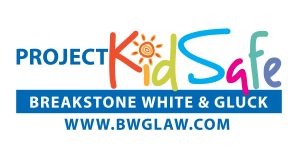 Our Boston personal injury lawyers represent clients in all personal injury matters, including motor vehicle accidents, medical malpractice, premises liability, wrongful death and cases involving injuries caused by defective products and unsafe toys. We share our holiday toy safety series as part of our Project KidSafe campaign.
Our Boston personal injury lawyers represent clients in all personal injury matters, including motor vehicle accidents, medical malpractice, premises liability, wrongful death and cases involving injuries caused by defective products and unsafe toys. We share our holiday toy safety series as part of our Project KidSafe campaign.
To learn more, visit our toy safety page. You can also visit our website to learn more about our attorneys and their experience.
Chemical Inhalation Exposure Kills Restaurant Employee
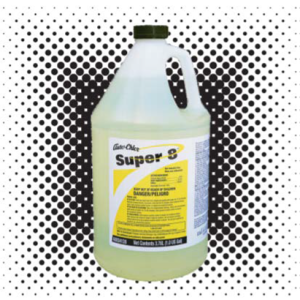 A tragic chemical exposure has claimed the life of a worker at the Buffalo Wild Wings restaurant in Burlington. Ten other restaurant employees and patrons also reported inhalation injuries.
A tragic chemical exposure has claimed the life of a worker at the Buffalo Wild Wings restaurant in Burlington. Ten other restaurant employees and patrons also reported inhalation injuries.
The Boston Globe reported that a male employee cleaning the kitchen with a product called “Super 8” was overtaken by nausea. The employee stepped outside to catch his breath. A second employee who attempted to remove the cleaner became sick and subsequently died from inhalation injuries. According to the Globe, the 10 other employees and restaurant patrons reported shortness of breath, burning eyes and other symptoms of chemical exposure for which they were treated at local emergency rooms.
News reports identified the caustic cleaning agent as “Super 8”, a sodium hypochorite concentrated solution which is intended for use as a general-purpose sanitizer empty stain or for manual or automatic dishwashing. When inhaled, the fumes cause severe bronchial irritation and pulmonary edema.
Chemical exposures in restaurants occur with alarming frequency. Breakstone, White & Gluck has represented several victims of chemical exposures due to inhalation and caustic burn injuries. In our experience, inhalation injuries such as the recent Buffalo Wild Wings incident occur as a result of the failure to provide:
- adequate ventilation;
- adequate airway protective gear
- ill-advised mixing of chemical agents
- adequate skin protective gear
Breakstone, White & Gluck has a track record of success in obtaining justice for victims of serious respiratory and burn injuries caused by chemical exposures in the workplace. In many of these cases, the exposures result in life-long respiratory injuries, scarring and emotional distress.
Recent cases:
- Our attorneys represented a worker who inhaled chlorine at the Deer Island Waste Facility in Boston and suffered severe burns which temporarily handicapped him, leaving him unable to work.
- Our attorneys represented a restaurant worker who consumed tainted beer from a recently sanitized beer tap. The lines had been chemically sanitized, but not properly flushed, resulting in ingestion of chlorine which caused esophageal burns.
Free Legal Consultation – Breakstone, White & Gluck of Boston
We would welcome the opportunity to review your potential claim related to chemical exposure and inhalation injuries or burns to see if we can assist you in obtaining full and fair monetary compensation.
Please contact the Boston personal injury lawyers at Breakstone, White & Gluck for a free and confidential legal consultation. Call 800-379-1244 or 67-723-7676 or use our contact form.
Keep Magnet Toys Off Your Holiday Shopping List
We urge parents to keep magnet toys off your holiday shopping list for young children. High-powered “rare-earth” desk magnet toys are highly dangerous and there are many painful stories of children ingesting them, then fighting for their lives in surgery. But there are also other types of magnet toys, including magnet tile building sets and magnet construction toys. While these are very popular, this doesn’t mean they are safe for your family. Take time to do your research, read age recommendations and really consider your children’s needs.
Magnet Desk Toys or Cluster Magnet Toys
Read by product type:
Magnet Desk Toys or Cluster Magnet Toys
Tile Magnet Toys
Magnetic Construction Sets
Final Word on Safety
Magnet Desk Toys or Cluster Magnet Toys

Cross desktop magnet sets off your holiday shopping list. These have caused hundreds of children injuries.
The Consumer Product Safety Commission (CPSC) has worked to take desktop magnet toys off the market to prevent injuries to children. The problem is the average set has 125 or 216 strong magnet balls, though some have more than 1,000 pieces. The magnets are tiny and are extremely high-powered.
These magnet sets come apart and can be reassembled into unique shapes. In a child’s hands, the magnet clusters may become a necklace, triangle or whatever formation they imagine. When magnets are put in a child’s mouth, they can attract to each other, causing serious injuries in the digestive system as well as blood poisoning. Children usually require surgery for the intense pain.
New Magnet Safety Standard. Prior to 2014, “rare-earth” magnet sets were required to carry age recommendation labeling of 14 and older. In 2014, the CPSC established a federal toy safety standard which required magnets to be large enough to exceed the CPSC’s “small part” standard for toys or that magnetic parts have a force of attraction of 50 kG² mm² or less, according to the CPSC’s Final Rule: Safety Standards for Magnet Sets. The CPSC safety standard effectively made it illegal to sell “rare-earth” magnet sets in the U.S. and there was a positive response, an 80 percent reduction in magnet-ingested injuries, according to The Journal of Pediatrics.
You may guess young children are at the highest risk. But children age 4 through 12 suffered the most injuries in the CPSC’s analysis of ER visits over 5 years, from 2009 to 2013. According to the Federal Register dated October 3, 2014, the agency concluded an estimated 2,900 children had suffered magnet ingestion injuries. Children age 4 through 12 suffered 1,900 injuries – or 65 percent.
Tile Magnet Toys
For all this work, in 2016, the 10th Circuit of Appeals ruled the CPSC’s pre-requisite factual findings were “incomplete and inadequately explained.” The Court vacated the safety standard and remanded it back to the CPSC for further proceedings.
The lawsuit had been filed by Zen Magnets, one of the “rare-earth” magnet makers. The company is now selling its products again, under the Buckyballs and Mandala names, according to Tech Crunch. Again, we stress, please don’t buy these toys, especially if you have children or a pet. The parts are small and scatter easily. If you don’t find our blog compelling, we encourage you to read this article in STAT, called “Toy magnets are harming kids again. They need to be banned – for good,” August 6, 2019.
Tile Magnet Toys

Magnet tile toys
These are magnets encased in plastic triangle and square shapes. These are popular, marketed as toys that help stimulate learning and imagination. Some of these are designed for children under age 3, some for children ages 3 and up; others are for age 6 and up. If you do purchase one of these sets, carefully check the age recommendation and secure it in a container out of reach of children.
There has been at least one case of the encasements opening and a child swallowing magnets. Last December, a Wisconsin mother shared her frightening story on social media and the Today Show reported on it. The woman’s 4-year-old son had swallowed 13 magnets from one of the tile magnet kits. After he began vomiting, she rushed him to a local hospital where surgeons had to remove part of his colon, intestine and appendix. The product manufacturer was not identified in the story.
The CPSC regularly issues recalls about toys containing small magnet parts. One of the largest recalls involving tile magnet building toys came in 2006, when Mega Brands America, Inc. recalled 4 million Magnetix Magnetic Building Sets. The recall was first announced on March 31, 2006 and re-issued and expanded in April 2007. The CPSC reported one child had died and one child had suffered aspiration. 27 others had suffered intestinal injuries, according to the CPSC news release.
The tragedy could have claimed even more lives; there had been 1,500 reports of magnets coming apart. Although the Magnetix Magnetic Building Sets were labeled age 6 and older, at least 10 injuries involved older children, up to age 11.
Magnetic Construction Sets
According to CBS News, in October of 2006, Mega Brands America settled a lawsuit with 15 victims for $13.5 million.
In 2009, consumers learned there was further wrongdoing in this case. On April 14, the CPSC announced that Mega Brands America, Inc. had agreed to pay a $1.1 million civil penalty to settle allegations that the company (and Rose Art Industries, which it had acquired) had failed to provide timely information about product dangers to children.
Magnetic Construction Sets
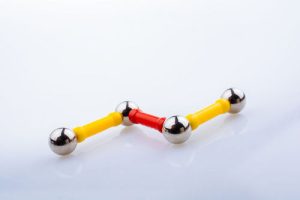
Magnet construction sets typically have magnets snap together with other stick pieces.
These sets include plastic rods and balls which can be snapped together with the magnet attraction.
Final Word on Safety
One problem is Consumer Reports found a full range of age recommendations across several popular products – and manufacturers unwilling to answer questions. Since age recommendations are the most fundamental tool consumers have, we recommend steering clear of these.
Final Word on Safety
The CPCS is responsible for overseeing product recalls and a quick search of its database can glean valuable information for parents. Visit www.cpsc.gov and search by product name or type of products. You can also visit the CPSC’s magnet information center.
With magnet toys, product regulations and age recommendations continue to change. They are very challenging to bring into any home safely, but especially homes with children of various ages and development skills and pets. In the end, you must make your own decision, but we urge you to be overly cautious and purchase other toys. There are so many other toys out there which can provide your child with a safe and enjoyable experience.
Breakstone, White & Gluck – Boston Toy Safety Lawyers
Breakstone, White & Gluck is a Boston law firm specializing in personal injury, medical malpractice and product liability. We wish Massachusetts families a safe and healthy holiday season and share our toy safety tips as part of our Project KidSafe campaign.
If you have been injured, contact Breakstone, White & Gluck to learn your legal rights at 800-379- or 617-723-7676. You can also use our contact form.



